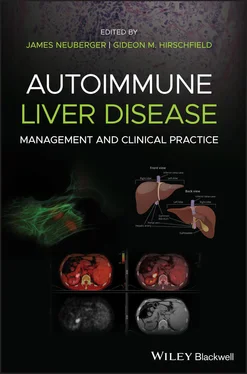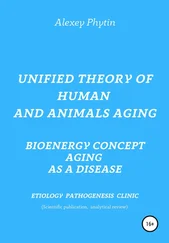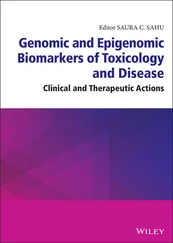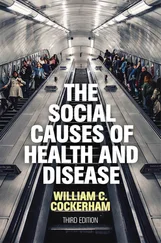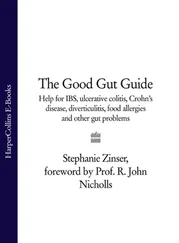Loss of Immune Tolerance to Autoantigens and Perpetuation of Autoimmune Diseases
Overview
Autoimmune diseases are uncommon, despite the high frequency of genetic susceptibility and environmental exposure to microbial pathogens and xenobiotics, including drugs. Autoimmunity requires four essentials. First, environmental triggers are required to initiate loss of tolerance to autoantigens in susceptible individuals ( Figure 2.1). Second, the individual must have HLA alleles that facilitate autoantigen activation of T cells. Third, T cells must express autoreactive TCRs. Fourth, the individual must fail to immunoregulate the response to autoantigens. Evidence that low levels of autoimmune reactions are common in healthy people highlights the fact that these initial steps are common but only deleterious when not immunoregulated. GWAS indicates that failure to immunoregulate an autoimmune reaction is dictated by epigenetic SNPs for enhancers and SEs of gene expression more than SNPs for HLA and non‐HLA proteins. Moreover, these SNPs are critical drivers of the cell and tissue specificity of autoimmune diseases. Multiple factors and mechanisms to break tolerance to self‐antigens have been identified.
The increasing incidence of autoimmunity and inflammatory diseases observed worldwide is correlated with changes in environmental factors, including a more modern lifestyle, improved hygiene, a Western diet, use of antibiotics, and elimination of childhood parasitic infections. Each of these affect the composition and function of the gut microbiota. Although the proposed causal link between the gut microbiome and autoimmunity has not been proved, available data indicate that interplay between the gut microbiota and the innate and adaptive immune systems of the intestine and liver plays key roles in both normal and dysfunctional systemic immunity.
The gut microbiome has been implicated in autoimmunity ( Figure 2.1) [20]. The gut microbiota change dynamically under the influence of aging, sex hormones, diet, water purity, hygiene, sanitation, pollution, exposure to pathogens, use of antibiotics, and the integrity of the gut–blood barrier. Gut microbiota are composed of commensal bacteria, fungi and viruses, as well as potentially pathogenic bacteria and fungi. In addition, the microbiota process food, xenobiotic pollutants and drugs to generate micronutrients and metabolites. Intestinal immune responses and the leakiness of the mucosa dictate the types and concentrations of PAMPs, DAMPs, cytokines, microbes, and food antigens entering the portal vein for processing in the liver. PAMPs and DAMPs stimulate enterocyte inflammasomes leading to secretion of proinflammatory cytokines. As discussed earlier, bacterial metabolites of vitamin B are the activating antigens for MAIT cells. Thus, the gut microbiome and intestinal immune responses appear to influence systemic immunity, and risk for autoimmunity, through the innate and adaptive immune responses of the liver.
Altered composition of the gut microbiota, referred to as “dysbiosis,” has been reported in autoimmune diseases, including AILDs. Whether dysbiosis is the cause or the effect of autoimmunity remains a key unresolved issue. Female sex hormones can also alter the gut microbiome, which may contribute to the female predilection in autoimmunity. If an altered gut microbiota or increased gut permeability were causally related to autoimmune diseases, then restoration of a normal microbiota and mucosal integrity could be therapeutic.
Mechanisms of Loss of Tolerance to Autoantigens
Bacterial and Viral Infections
Bacterial, fungal or viral infections can instigate innate and adaptive immune responses that result in autoimmunity [21]. Migration of neutrophils to sites of infection or sterile inflammation mediated by IL‐8, IFN‐γ, C3a, C5a, and leukotriene B4 plays a key role. Neutrophil phagocytosis of microbial organisms and particles leads to release of soluble antimicrobials and formation of neutrophil extracellular traps (NETs) comprising chromatin and proteases that enmesh and kill microbes. The proteolytic function of NETs also can generate neoantigens or microbial peptide molecular mimics of autoantigens (see next section).
Superantigens are proteins produced by pathogenic bacteria and viruses that trigger non‐antigen‐specific polyclonal T‐cell activation of up to 20% of the host's T cells. These activated T cells create a cytokine storm of secreted cytokines, especially IFN‐γ, which activates macrophages to secrete proinflammatory IL‐1β, IL‐6 and TNF‐α. This proinflammatory environment could promote adaptive immune responses to autoantigens in dead or dying cells.
Molecular Mimicry of Autoantigens
Molecular mimicry is a key mechanism leading to loss of tolerance to autoantigens [21]. It is defined as the cross‐reactivity of immune responses to antigenic epitopes of microbial peptides with autoantigenic epitopes of host peptides. Molecular mimicry has been observed between human autoantigens and peptide antigens of several viral, bacterial and fungal pathogens. Xenobiotics may also function as molecular mimics for autoantigens. For example, some halogenated xenobiotics exhibit immunogenic similarity with the lipoic acid‐binding domain of pyruvate dehydrogenase complex (PDC)‐E2, the primary autoantigen in PBC. Yet molecular mimicry is an insufficient explanation for a sustained loss of tolerance, which also requires failure to control the autoimmune response. Thus, molecular mimicry represents an environmental trigger capable of progressing to autoimmunity. Molecular mimicry to adjuvants (substances that enhance immune responses to an antigen) involves nucleosomes or ribonucleoproteins released after cell death. These molecules mimic viruses by stimulating an antiviral‐like, innate immune response with production of type 1 interferon.
Neoantigens, also called cryptic antigens, can elicit autoimmune responses against autoantigenic epitopes that are not immunogenic until modified by either somatic hypermutations or binding of haptens [22]. Haptens are small molecules, most often metabolites of drugs or environmental xenobiotics, that are incapable of eliciting an immune response unless bound to host carrier proteins. Hapten–carrier protein complexes elicit immune responses against a single hapten epitope and multiple autoepitopes of the carrier protein. For example, haptens generate autoimmunity against cytochrome P450 (CYP)2D6 in type 2 AIH and autoantibodies and a minority of patients with chronic HCV infection, whereas haptens bound to UDP‐glucuronosyltransferase (UGT) in those infected with HCV or hepatitis D virus, and with Addison disease, APS‐1 syndrome and some drug‐induced liver injuries result in anti‐UGT reactions. A subset of NK cells develop antigen‐specific memory to haptens, which may be important for immune responses after hapten reexposure. Oral supplements of lipoic acid act as a haptens in the immunogenicity of the lipoic acid‐binding site of PDC‐E2, the principal autoantigen in PBC. Biochemical modifications of self‐antigens can also increase the immunogenicity of autoantigens. The best example is citrullination, produced by posttranslational conversion of arginine to citrulline. Since DNA does not encode the amino acid citrulline, citrullinated self‐proteins become autoantigenic, as in RA.
Failure of Apoptosis to Conceal Autoantigens and Eliminate Autoreactive Cells
Apoptosis is normally an immunologically silent form of cell death [23]. Phagocytic removal of the corpse (efferocytosis) of apoptotic cells and blebs by APCs normally induces release of anti‐inflammatory molecules, inhibits NF‐κB stimulation of proinflammatory cytokines, and promotes secretion of anti‐inflammatory IL‐10 and TGF‐β. Failure of these normal APC mechanisms is an attractive hypothesis for the genesis of autoimmunity, because apoptotic blebs contain disproportionately high concentrations of known autoantigens. However, non‐apoptotic forms of cell death, such as necrosis or necroptosis, result in APC phagocytosis, processing and presentation of autoantigenic peptides to autoreactive T and B cells in immunogenetically susceptible persons. This is the proposed explanation for AIH after documented infections with hepatotrophic or other viruses causing hepatocyte necrosis. Defective apoptosis might also contribute to the persistence of autoreactive T and B cells in autoimmune diseases. Genetic defects in Fas (CD95), Fas‐L (CD95L) and RAS pathways cause lymphoproliferative disorders and autoimmunity due to inability to eliminate autoreactive effector cells.
Читать дальше
